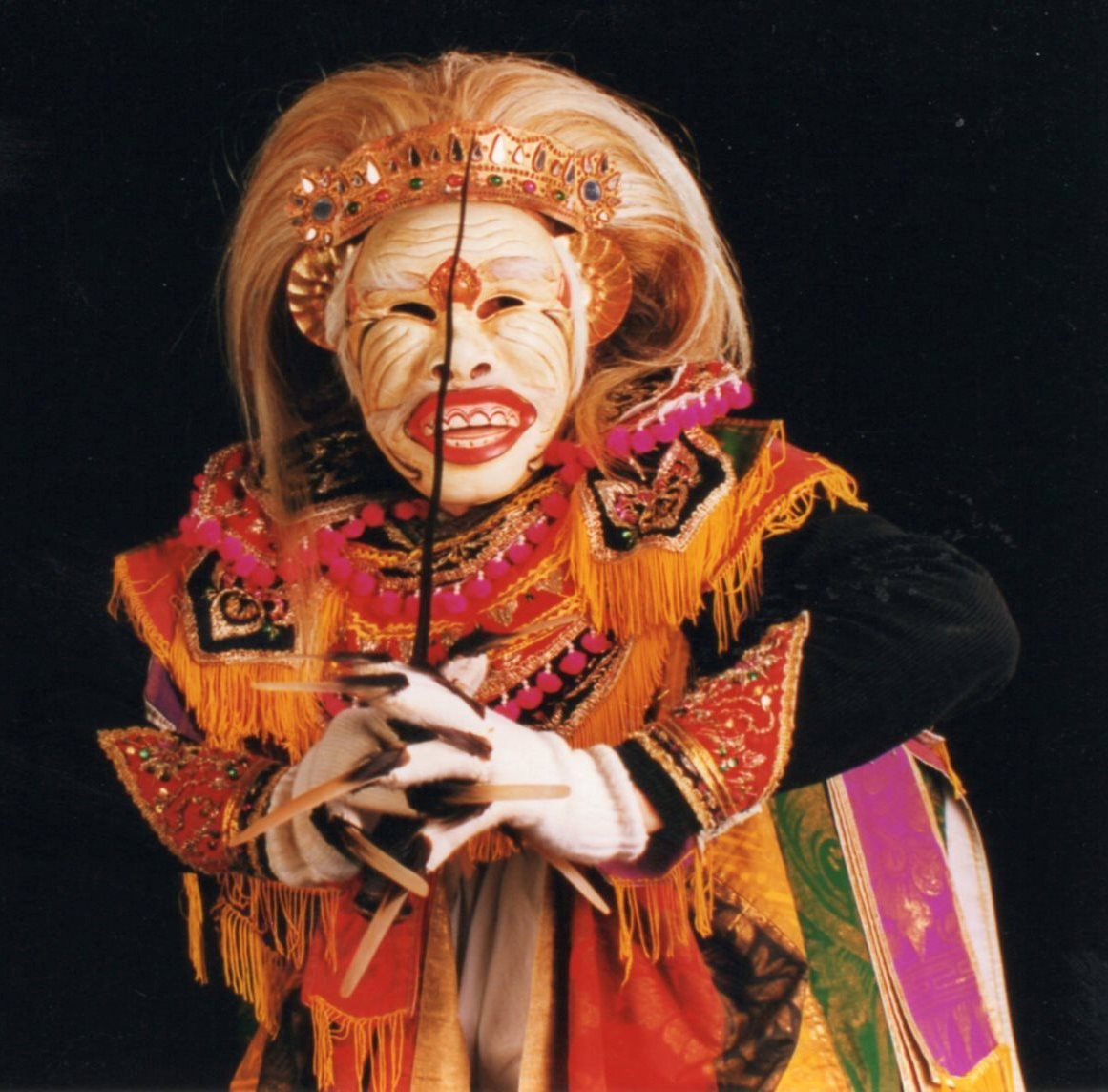|
|

THE BLESSING OF
SIDHA KARYA
Topeng ritual performance
in global warming's time |
 |
*
|
adapted & interpreted by
Dario De Falco Enrico Masseroli
musical arrangements
Enrico Masseroli
with the musicians of
Gamelan Gong Cenik
Jos Olivini Pierangelo Pandiscia
Maurizio Bolis Diego Comi Nicolò Pandiscia
|
* |
|
In the island of Bali (Indonesia), aesthetics and devotion intertwine with surprising harmony: theatre, music and dance are the very core of social and religious life. The ancient and popular representations of Topeng is an integral part of the ceremonial liturgy. Its masks celebrate, between myth and history, the deeds of the ancient courts, entertaining the Gods and the people thanks to references to the current events and impromptu jokes of grotesque and fool-like characters.
Sidha Karya's story deals with a conflict that is still relevant today: the relationship with the stranger, the unknown. Brahmana Sangkya noble and elderly priest, in poor clothes, returns from Java, to attend an important ceremony presided over by King Watu Renggong (16th century, the Balinese golden age). Mistaken for a beggar, he is meanly driven out. Immediately misfortune strikes the country: disasters, disease, violence. The king, having to find, according to his role, the cause of the ailment, remembers the episode and sends for the beaten old man, who turns out to be his spiritual brother, son of that Brahman who helped his father to ascend the throne. The "recognized foreigner", after accepting the apology, restores harmony fulfilling the previous interrupted ceremony by throwing rice grains of different colors in the four directions.
From then on, his appearance, deified with the name of Sidha Karya (the one who can do the work) will be necessary to conclude each ceremonial Topeng. His mask, with large protruding teeth and long nails, is feared and at the same time expected by children: the one who is grabbed will have candies or coins as a gift. At the same time, his vigorous and disordered dance captures the attention of demons, thus allowing the high priest - in the Balinese temple working nearby - to conclude his ritual for the sanctification of water undisturbed.
In 2002 in the aftermath of the devastating terrorist attack in the disco of Kuta, a ceremonial play was conceived and created, as an exorcism / response to the massacre, which made the teaching of ancient history its own: The other is our brother. We need to acknowledge and understand what happens and positively incorporate what appears destructive.
Global warming, the effect of ongoing climate change, is offering us the opportunity to reflect on our lifestyle, which is incompatible with the ecosystem and our health. Just as in Bali the ancient stories of Topeng integrate references to current events, so in our show chamberlains and buffoons burst into the climate emergency with unscrupulous irony.

|
 |
PROGRAMM
Baris musical introduction with the melody of the famous warrior dance
Pengempat
traditional prologue with the dances of the characters of the court
Topeng Keras Manis Strong and resolute Minister, he carries out the king's orders
Topeng Keras Lucu Comic Minister, bighead and joker
Topeng Tua Old adviser to the king, he cannot conceal the ailments of age
The two storytellers Court attendants
They translate the dialogues from Kawi, the ancient literary language
Penasar The older attendant, grumpy, witty and jovial
Wijil The younger attendant, smart and sparkling
Topeng Dalem
Watu Renggong The king, symbol of perfection in his androgynous figure, his dance combines vigorous male poses with sinuous and elegant female movements
Bondres
Fools. Grotesque commoners, they enjoy total freedom of expression
Keta Lame and stuttering due to a traffic accident
Bondesa tua Old dancer nostalgic and enduring
Suab Bully, arrogant and drunkard
Nyoman Semariani Mature girl, ugly and talented, desperately looking for a boyfriend
Wijil
tells the story's epilogue
Sidha Karya
The protagonist of the story, concludes the ceremony with an offering to Bhuta Kala (demons)
Technical requirements
The play can be presented in any space both indoors and outdoors, in compliance with the rules on spacing in force at the time.
Scene area m. 6 x 6 minimum, available at least 3 hours in advance for preparation.
Lighting where and when necessary, a fixed set, possibly with cutting lights in warm colors (amber / orange / pink / yellow jellies).
Duration 75' more or less
|
| |